Facsimile
Transcription
Bestiaire

Hic adamans significans gentes baptismum seruantes. Adamans lapis. hic sunt du osmontes. Orientis. et Occidentispingitur. Et triangule figure desuper. Et quadran gule figure in secundo gradu. Et rotunde figure in tertio gradu. Quod totum allegorice dicitur. Ter roboles sunt lapides homines et feminas significantes.

In nomine sancte et indiuidue trinitatis Besti arius incipit qud philippus thaonensis in lau de et memoria regine Anglie alienoris fecit. Et nomen uere quod iuste conuenit ex te. Ebraice dictum est; Alienore laus est dei. Et quia laus dicitur a phillippo laudetur. Ecce phi- lippus adest cui dicere talia fas est.
Uersus regine que morbus arte colore. Iuno. Minerua. Uenus. fala uidetur aue. moribus es iuno. forma fenus ad te minerua. histribus equaris. his tribus equales. Uix il las dotes naso discribere posset. Quas tibi nature largas manus tribuit. Nunc te laudare dimittam regia proles. Dicere qua lis sis sub breuitate uolo. Nestor. Cato. Pla to meditari scribere phari. Qualis sis neque ant corde manu labiis. Alienor lucis iubar est nunc orbita regis. Sospes permaneat utque cupit uigeat.
Liber iste Bestiarius dicitur; Quia in primis de bestiis loquitur. Et in secundario de auibus. ad ultimum de lapidibus. Itaque tripharie spargitur. Et allegorie subintellegitur. sunt animali que natura fixit ut prona. Atque uentri obbedi encia et in hoc denotatur puericia. Sunt et Uolucres in altum uolantes que designant homines celestia meditantes. et est natura lapidum que per se est inmobilis. Ita nobis cum superis sit deus ineffabilis. ut in sua presenscia eius misericordia et sanctorum gloria; decantemus alleluia.
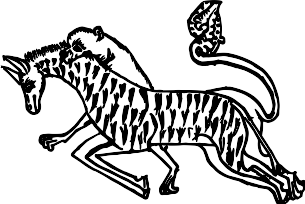

















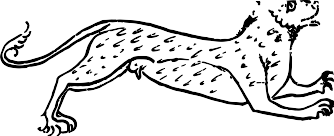

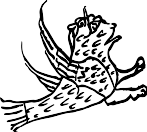


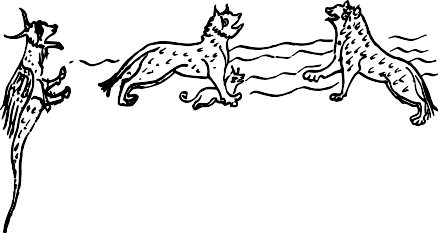
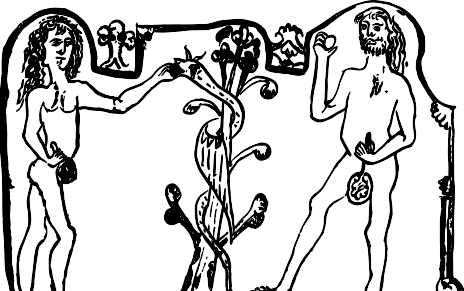

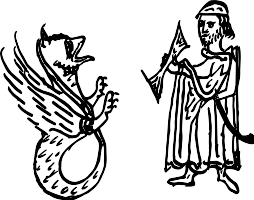
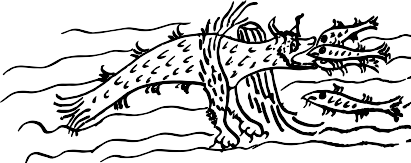
Hec sunt animalia gentes designancia. per eorum opera. et ut queque propriam conseruet Animam. et sic homo gratiam. et sequentes bestie sub hominis specie referuntur congrue.

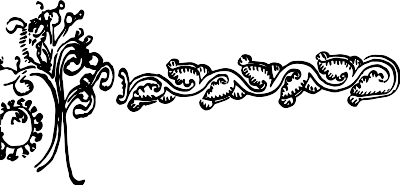




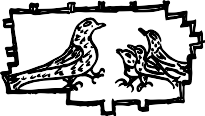


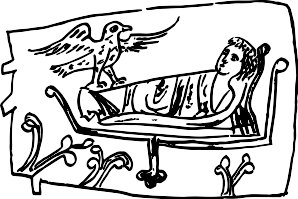
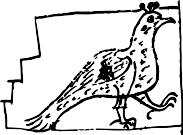


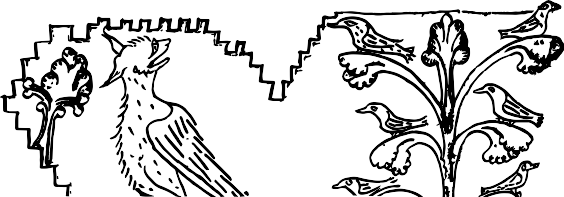


IBex morticinis carnibus uescitur. et Ita intelligitur homo carnalis dum non meditatur. sub specie huius auis.
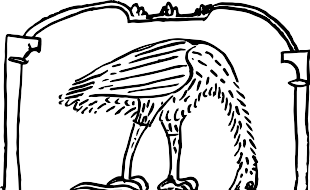


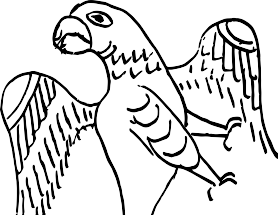
Translation
About
About this text
Identification
Oxford, Merton College Library, MS 249Physical description
Object
Support description
Support
A composite manuscript in parchment containing a number of codices, not all combined at once.iv + 188 leaves 275mm x 195mmCollation
Two singleton flyleaves; Part I: 1⁸, 2⁴(4 canc.); Part II: 3-7⁸, catchwords; Part III: 8-10⁸; Part IV: 11⁴; Part V: 12-13⁸, 14-15¹⁰, 16-22⁸, 23¹⁴, catchwords; a singleton flyleaf.
Layout
In double columns.Hands
The manuscript as a whole contains more than one hand. Art. 1 is written in an informal early French gothic bookhand. The others are written in English bookhands, with the exception of some later (c.1300) additions, written in anglicana hands.
Decoration
Contains a number of coloured initials in either red or blue.History
Provenance
English, except possibly Part I which could be French.
Acquisition
Given to the College by William Reed in 1374.
Identification
Oxford, Merton College Library, MS 249 - Part I (fols. 1r-11v)Contents
fols. 1r-10v: Bestiary Philippe de Thaon, Language of text: Anglo-Norman, Latinfols. 11rv: De Corpore Christi, Language of text: LatinPhysical description
Object
Hands
Decoration
Item 1 contains a total of 45 unframed line drawings, with minimal use of colour, depicting people and animals mentioned in the text, along with two decorative botanical illustrations.Identification
Oxford, Merton College Library, MS 249 - Part II (fols. 12r-51v)Contents
fols. 12r-29v: De Miseria Humanae Conditionis Innocent III, Language of text: Latinfols. 29v-45v: Canons of Lateran Council IV, Language of text: Latinfol. 45v: Two sets of verses: 'Qui bene perpendit quam sit grave pondus honorum' (6 lines), and 'Est levis et vacua fragilis radice lutosa' (3 lines), Language of text: Latinfols. 45v-48v: Valerius ad Rufinum de Uxore non Ducenda (De Nugis Curialium iv. 3-5) Walter Map, Language of text: Latinfols. 49r-51v: Sermo de Zacharia, Language of text: LatinPhysical description
Object
Hands
Identification
Oxford, Merton College Library, MS 249 - Part III (fols. 52r-75v)Contents
fols. 52r-73r: De Sacro Altaris Mysterio Innocent III, Language of text: Latinfol. 73r: Ordo pro iter agentibus ad adorandum, Language of text: Latinfols. 73r-4v: Ordo Missae per annum, Language of text: Latinfols. 74v-5r: Notes on Zacharia, Language of text: Latinfols. 75rv: Typological notes on Matthew, Abraham, Aram, Language of text: Latinfol. 75v: Prayers to Mary Magdalene and Nicholas, added in an anglicana hand, Language of text: Latinfol. 75v: A note recording a transaction between Alicia Molote and Gerard Croftun of Salisbury, dated 1324, Language of text: LatinPhysical description
Object
Hands
Identification
Oxford, Merton College Library, MS 249 - Part IV (fols. 76r-79v)Contents
fols. 76r-79r: Calendar, Language of text: LatinPhysical description
Object
Hands
Identification
Oxford, Merton College Library, MS 249 - Part V (fols. 80r-186v)Contents
fols. 80r-115r: Regula Pastoralis Gregory I, Language of text: Latinfols. 116r-141r: Fragment from a Commentary on the Psalter, Language of text: Old Frenchfol. 141r: Verses in anglicana hand: 'Nectareum rorem tellus instillat Opimphis' (14 lines), Language of text: Latinfol. 141r: Verses in anglicana hand on the death of Robert Grosseteste: 'Anni cum Domini transissent mille ducenti' (4 lines), Language of text: Latinfols. 141v-74v: Sermons Maurice de Sully, Language of text: Latinfols. 174v-9r: Ars Dilatandi Sermonum Richard of Thetford, Language of text: Latinfols. 180r-2r: Peniteas cito, glossed William de Montibus, Language of text: Latinfols. 182r-5v: Sermons, Language of text: Latinfol. 185v: Verses in anglicana hand: 'Numquam natura conversit sic sua iura' (11 lines), Language of text: LatinPhysical description
Object
Hands
Other Resources
About this edition
This is a facsimile, transcription and edition of Philippe de Thaon's Bestiary, contained within Oxford, Merton College Library, MS 249 (fols. 1r-10v).
The digital edition was encoded in TEI P5 XML by Sebastian Dows-Miller.
Availability
Publication: Taylor Institution Library, one of the Bodleian Libraries of the University of Oxford, 2020. XML files are available for download under a Creative Commons Attribution-ShareAlike 4.0 International License  . Images are available for download under a Creative Commons Attribution-NonCommercial-NoDerivatives 4.0 International License
. Images are available for download under a Creative Commons Attribution-NonCommercial-NoDerivatives 4.0 International License  .
.
Source edition
Philippe de Thaon's Bestiary de Thaon, Philippe c. 1300?
Editorial principles
Encoding captures lexical, layout, and formatting information, as well as SVG renders of the original illustrations.
Notes on the Diplomatic Transcription
A deliberately accessible approach has been taken for the diplomatic transcription, regularising character variation and replacing characters which do not appear in the modern alphabet with their standardised equivalents, with capitals marked as in the manuscript. Hairstroke usage above the letter i is not represented, so as to render it accessible to the widest possible readership, but hairstrokes in the form of an acute accent are presented above tonic e in the three instances that this occurs (all on f. 1vb), to represent this feature of particular palaeographic note.
Punctuation is retained, with the period ‘.’ representing the punctus, which varies in exact positioning, often appearing more like an interpunctus. The punctus elevatus is represented by a semi-colon ‘;’ to ensure compatibility across font types. Continuation markers at the end of lines are represented using a hyphen ‘-’.
Abbreviations are expanded in italics, either according to what is observed unabbreviated elsewhere — as with the expansion of the marker ꝯ as cun or cum despite its usual editorial realisation as con or com — or by reference to the rhymed pair, if available. When a decision has proven necessary between bilabial m and alveolar n and none of the above information is available, m is used before a bilabial consonant, and n elsewhere.
Scribal additions, in all cases appearing above the line, are reproduced as faithfully as the technology has allowed, while scribal deletions are rendered using a strikethrough or expunctuation, depending on what appears in the codex. Litterae notabiliores are represented using their principal colour, always red or blue.
Notes on the Critical Edition
Since editions of the text based on all three witnesses do exist, the aim of this edition has been to be as faithful as possible to the text in MS 249, which has necessitated a highly conservative approach. The edition is largely in keeping with the recommendations of Foulet and Speer (1979), standardising capitalisation, the use of i and j, and u and v, word boundaries, and punctuation. Roman numerals are left unaltered in the one instance in which they appear (f. 7vb, l. 7). Editorial additions are marked with square brackets [ ], while suppression of material is marked using parentheses ( ). Scribal additions and deletions are accepted and normalised.
Two diacritic marks are used: the acute accent on tonic e where tonic status cannot be determined from surrounding context, and the cedilla on c marking sibilance. The agglutinated forms del, nel, and sil are deglutinated before vowels to match modern word divisions.
The text has been converted from concatenated text to individual lines of verse, to improve readability. The position of illustrations has also been regularised, either appearing immediately after the heading of the section in question, or at a logical point in the text.
Corrections for line length and use of the tréma to indicate vowel hiatus have been avoided. Such editorial involvement could be valid in an edition of the text across all three witnesses, but is not appropriate in this case, given the desire to maintain the edition’s faithfulness to MS 249.
Similarly, seemingly superfluous words are not suppressed unless they result from clear scribal error. Atonic e has also not been elided where it would be in speech. Apparent lapses in rhyme, particularly involving the word Deus or Deu, usually paired with tonic e in rhyming position, are also retained.
In keeping with the conservative nature of this edition, rejected readings and additions are kept to a minimum, with major corrections included only when absolutely necessary for comprehension of the text. When these are made, the correct forms have been determined either from context or by comparison with the other witnesses.
Litterae notabiliores are represented using their principal colour, always red or blue. Missing legends for illustrations are included in English, or maintained and regularised if present.
Downloads
Facsimile
Images are available for download under a Creative Commons Attribution-NonCommercial-NoDerivatives 4.0 International License  .
.
Images
- Image #1 (JPG - 6.5M)
- Image #2 (JPG - 5.7M)
- Image #3 (JPG - 6.0M)
- Image #4 (JPG - 6.0M)
- Image #5 (JPG - 6.3M)
- Image #6 (JPG - 5.8M)
- Image #7 (JPG - 6.1M)
- Image #8 (JPG - 6.1M)
- Image #9 (JPG - 6.3M)
- Image #10 (JPG - 6.1M)
- Image #11 (JPG - 6.2M)
- Image #12 (JPG - 6.1M)
- Image #13 (JPG - 6.6M)
- Image #14 (JPG - 5.6M)
- Image #15 (JPG - 6.6M)
- Image #16 (JPG - 5.7M)
- Image #17 (JPG - 6.5M)
- Image #18 (JPG - 5.8M)
- Image #19 (JPG - 6.7M)
- Image #20 (JPG - 6.0M)
All Images (ZIP - 1.4G)
All Images (PDF - 459M)
Text
XML files are available for download under a Creative Commons Attribution-ShareAlike 4.0 International License  .
.